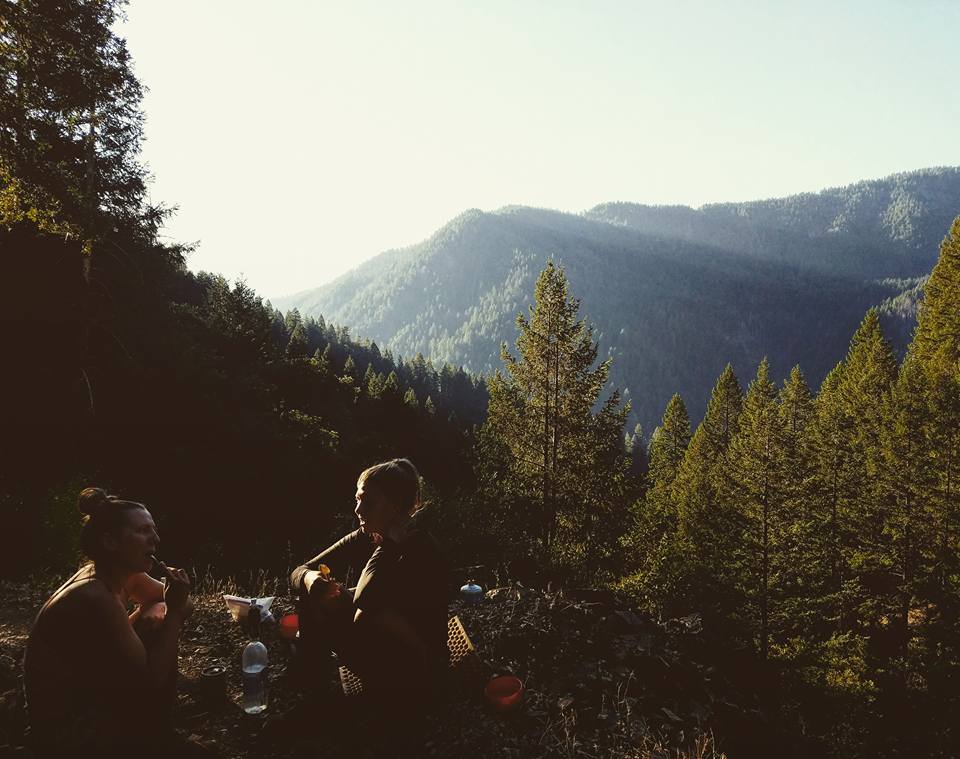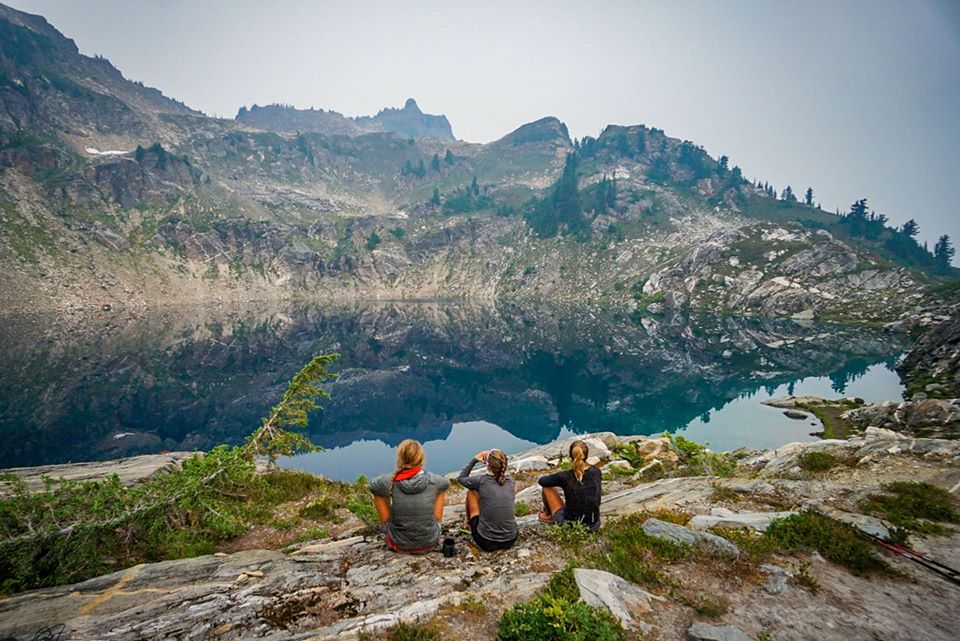When you’re thru-hiking, your days are consumed by simple tasks.
“All you have to concern yourself with is: What am I going to eat today? Or where should I pitch my tent? Where is my water? And you walk,” says Michelle “SuperClassy” Markel, 47, an experienced thru-hiker who’s tackled the Pacific Crest Trail (PCT), Appalachian Trail (AT) and other long trails. “Thru-hiking distills life down to its most simple principles,” she says. “It makes it tough to go back to life before you hiked.”
It’s that simplicity that can make the end of the trail that much more challenging. After months of walking and embracing a new routine, thru-hikers like Markel say they struggle to adjust to life back home, especially if the hike was a transformative experience.
“Finding your place in the world can be a challenge after you basically just disappeared for five months,” says Alexa “Rise” McRoberts, 29, who hiked the PCT in 2017. “There are so many people—the noise and chaos!”
She remembers coming back home from her thru-hike in the midst of the 2016 presidential election. The near-constant news cycle, which she’d been removed from during her five months on the trail, felt overwhelming, and reading the coverage made her feel shocked and sad.
Heather “Anish” Anderson, a 37-year-old National Geographic Adventurer of the Year and author who completed the Triple Crown of thru-hikes, says she also struggles with readjusting to the rhythms of everyday life when she leaves the trail. “There are so many micro-decisions and things vying for your attention,” she says. “On-trail, you don’t have to decide to take each step. Things move slower.”
To weather the adjustment, veteran thru-hikers offered some off-season advice:
1. Think about your reentry plan before you leave.
After hiker Jen “Ironjen” Magnuson, 42, tackled a section of the AT with her husband, she came back to a life that felt unmoored. She and her husband had to leave trail earlier than expected, due to tendonitis he developed during the course of their hike, but because they’d planned to move upon their return, they ended up with no place to stay once they stopped hiking.
Now, she says, she wishes she’d thought through some of those post-hike logistics before leaving. In preparation for their impending move, the couple had downsized before they left; this meant they didn’t have many material items to come back to.
“The fun part of planning the hike is always the gear buying and strategizing resupply and plotting your anticipated progress, but thinking ahead to coming home will save you a lot of stress,” she says. “The big things I wish we had done were: Arrange for a specific place to live. Have a job lined up. Plan carefully to have access to the things you will need immediately off the trail like street clothes. We had to go buy clothes the day after we left the trail!”
2. Take the time to pause and reflect on your life—while you’re still on the trail.
McRoberts says she was able to take time at the end of her PCT hike to consider her goals and priorities. “Really figure yourself out,” she recommends. “Then let your heart tell you what you should do next.”
McRoberts’ first hike along the AT in 2013 inspired her to move to Colorado, where she eventually found a partner, lifelong friends and a job she loved. She says she made most of these decisions during her last few weeks of hiking.
Markel, a trained social worker, agrees. For her, figuring out what came next meant shutting off her devices, podcasts and music while she walked, and simply spending time with herself on the trail. “Most people don’t want to think about life off-trail, but you’re going to end your hike at some point,” she says. “Imagine how your life is going to be different. Think about how you can transfer these skills—the ones that make you a better person when you’re hiking—and [bring them] back home.”
Markel says she tends to find more clarity about her future when she’s on-trail. For her, that insight is one of the benefits of hiking, day after day. “Maybe it’s your purpose to find out where you want to be, in this age of possibility and remote work. You’re capable of changing your life to make it look like you want!”

Alexa “Rise” McRoberts pauses for a smoky breakfast break with her thru-hiking buddies in Northern California in 2017. (Photo Credit: Kahla “Shinex” McRoberts)
3. Hike your own hike—and the same goes for reentry.
“Hike your own hike,” thru-hikers often exclaim on the trail, encouraging each other to embrace their own pace rather than compete with or compare themselves to others. McRoberts says she took that sentiment to heart when it came to adjusting to life back home, too.
“Many people will find a thru-hike to be a very healing, meditative experience which will influence what reentry looks like,” McRoberts says. When she left the trail, she felt a strong urge to reshape her life. But for others, reentry might be a slow and painful process. Both options are just fine.
4. Stay connected to your trail family.
“Trail time [flies by] like dog years,” Markel says. “You hang out for a week and it’s like you’ve known each other for seven. It’s hard to lose that when you get off-trail.”
But the people you meet on-trail may scatter once the season ends. This can be tough, especially if you feel close to the people you hiked with.
Markel says she makes an effort to keep her support system in tact when she returns from a long hike, especially because her values may have shifted while she was away. She checks up on her trail family, not just by posting on social media, but by reaching out to people directly.
“More than likely you’re both feeling a sense of loss,” she says. “Keep in touch with the people who were out there with you because they’re probably going through the same thing.”
This is especially important for peers who are having trouble adjusting upon their reentry.
“Routinely reach out to those people [suffering from mental illness],” she says. “I think for most people, it really is enough to know that somebody is out there thinking of them and has them in mind. It can be tough to get through the day, so reach out if it’s been a while since you’ve heard from someone.”
5. Ask for professional help if you’re struggling.
Depression, anxiety and other mental illnesses that can accompany reentry aren’t worth shrugging off. If you’re feeling down, make an appointment with a healthcare provider or therapist at a local clinic to talk through what it’s like to return to your life after many months away. These counselors can recommend appropriate treatments. You can learn more about mental illness at the National Institute of Mental Health or HelpGuide.org. Or, consider reaching out to the National Suicide Prevention Lifeline, at 1-800-273-TALK (8255) or www.suicidepreventionlifeline.org if you don’t have a medical provider you trust in your area.
6. Take time to rest.
All the thru-hikers we spoke with mentioned taking advantage of the little luxuries they didn’t have on the trail, like eating foods they didn’t have access to, taking several days to veg out and letting their bodies rest and recover.
“I’m always excited about returning to a temperature-controlled environment (this includes water),” Anderson says. She uses the off-season to catch up with her loved ones, drink tea, read good books and sew—activities that leave her feeling restored.

Hiking partners pause for a morning meditation beside Colorado’s Mica Lake. (Photo Credit: Matthew Cowell)
7. Find an outdoor hobby that inspires you.
McRoberts fills the void left behind by backpacking with downhill and backcountry skiing during the winter months.
Depending upon where you live, you may be able to continue hiking through the off-season. But even if you can’t, consider snowshoeing or picking up a new hobby. “Thru-hiking teaches you to connect to nature,” Anderson says. “Observe what nature does in winter and follow suit.”
8. Pick a cause that’s meaningful to you, and direct your energy towards that.
Markel recently launched a website that focuses on supporting public lands because she’s passionate about wild places and says the project gives her something to look forward to when she’s off-trail.
To maintain positive momentum in between hikes, consider volunteering with an interesting organization, finding a job you feel passionate about, or building your own platform, like Markel did, if one doesn’t exist already.
9. Plan your next adventure.
Fantasizing about—and planning for—your next thru-hike can be a great way to pass the chilly months. Consider where you want to go and find adventure buddies online. Dehydrate healthy foods to take with you and organize your gear. These activities can help keep you focused on life ahead rather than the hike that’s behind you, which Markel swears by.
10. Integrate aspects of your on-trail life into your off-trail life.
For Anderson, staying in an on-trail mindset actually means avoiding planning her next adventure. She tries to embrace a mindful, simple life back home instead.
“It’s hard to stay the course when everything and everyone demands to know ‘what’s next,’ but I’ve found that the more I stay the course and keep focused on my present, the more steady my life becomes with less difficulty transitioning on and off-trail,” she says.
Markel takes a similar approach: After her 2015 PCT thru-hike, she moved into a van rather than returning to her former job as an investigator for Child Protective Services. She downsized and has been primarily hiking and traveling ever since. “I think a lot of people realize on the trail that what makes them happy is a simple life; that was the case for me,” she says.
Related articles:
